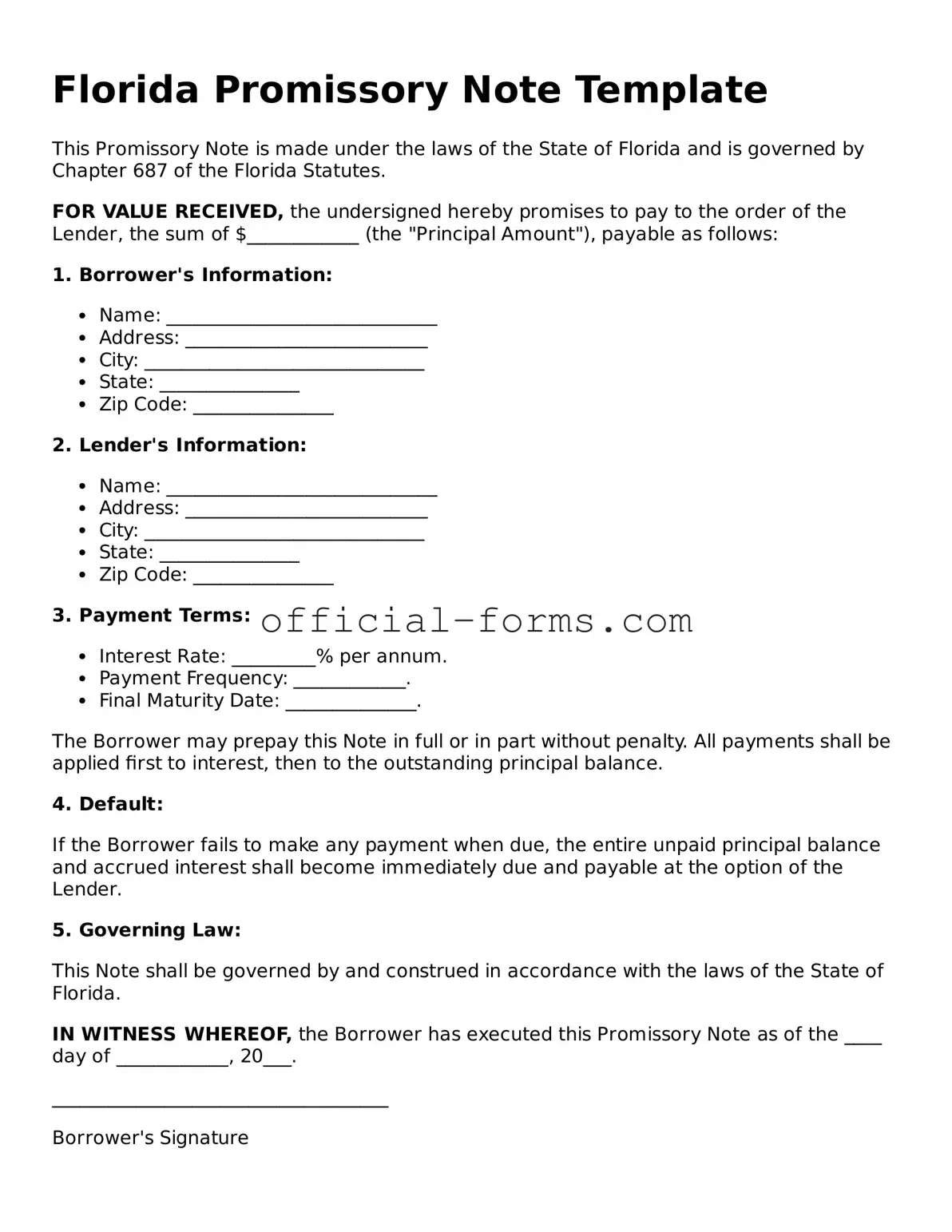Filling out a Florida Promissory Note form can seem straightforward, but many individuals make common mistakes that can lead to complications later on. Understanding these pitfalls is essential for ensuring that the document is valid and enforceable.
One frequent mistake is failing to include all necessary information. A Promissory Note must clearly state the names of the borrower and lender, the loan amount, interest rate, and repayment terms. Omitting any of these details can render the note incomplete and potentially unenforceable.
Another common error involves incorrect dates. It is crucial to specify the date the note is signed and the date when payments are due. If these dates are left blank or inaccurately filled in, it may create confusion regarding the terms of the loan.
Some individuals also neglect to clarify the payment schedule. Whether payments are to be made monthly, quarterly, or on another schedule, this must be clearly outlined in the note. Vague language can lead to misunderstandings and disputes between the parties involved.
Additionally, many people forget to include a default clause. This clause outlines what happens if the borrower fails to make payments as agreed. Without this provision, the lender may have limited options for recourse in the event of default.
Finally, not having the document properly signed can be a significant oversight. Both parties must sign the Promissory Note for it to be legally binding. Additionally, having a witness or notarization can further strengthen the enforceability of the document.
By avoiding these common mistakes, individuals can ensure that their Florida Promissory Note serves its intended purpose and protects their interests effectively.
